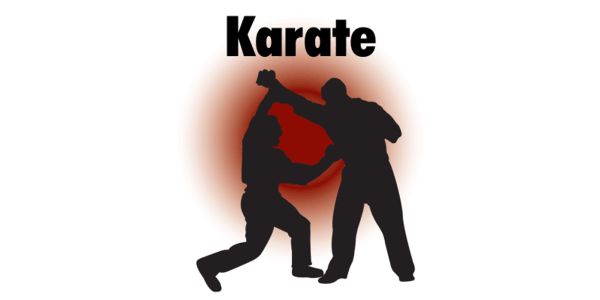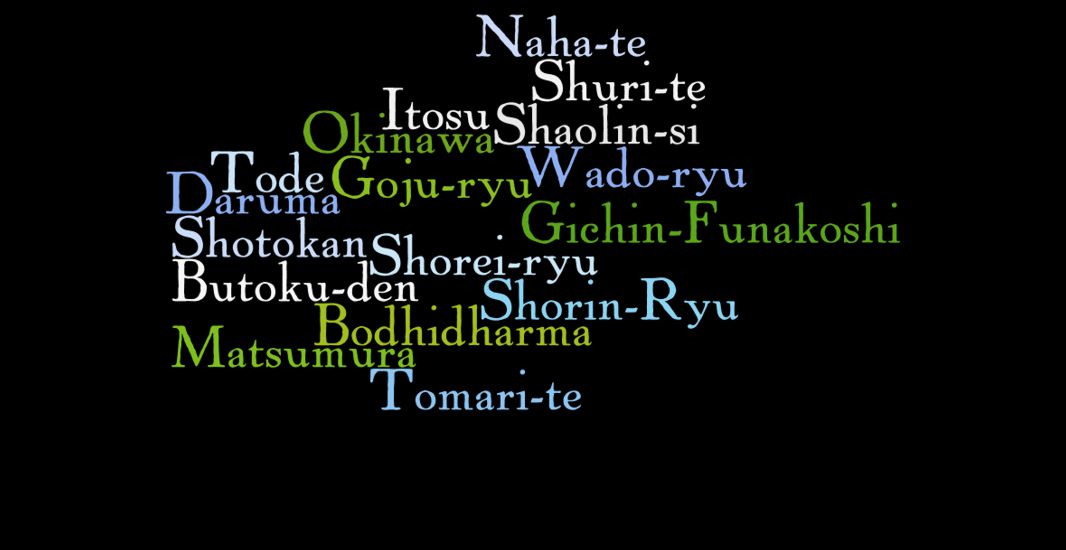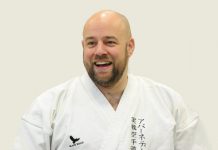 History of Karate
History of Karate
Bodhidharma also known as “Daruma” in Japan and as often as not, this Indian Buddhist monk is cited as the prime source for all martial arts styles or at the very least, for any style which traces its roots back to the fabled Shaolin Temple. However, the question of his contributions to the martial arts and to Zen Buddhism and even of his very existence has been a matter of controversy among historians and martial arts scholars for many years.
As legend has it, the evolution of karate began over a thousand years ago, possibly as early as the fifth century BC when Bodhidharma arrived in Shaolin-si (small forest temple), China from India and taught Zen Buddhism. He also introduced a systematized set of exercises designed to strengthen the mind and body, exercises which allegedly marked the beginning of the Shaolin style of temple boxing. Bodhidharma’s teachings later became the basis for the majority of Chinese martial arts. In truth, the origins of karate appear to be somewhat obscure and little is known about the early development of karate until it appeared in Okinawa.
Okinawa, Being at the crossroads of major trading routes, its significance as a “resting spot” was first discovered by the Japanese. It later developed as a trade center for southeastern Asia, trading with Japan, China, Indo China, Thailand, Malaysia, Borneo and the Philippines. In its earliest stages, the martial art known as “karate” was an indigenous form of closed fist fighting which was developed in Okinawa and called Te, or ‘hand’. Weapons bans, imposed on the Okinawans at various points in their history, encouraged the refinement of empty-hand techniques and, for this reason, was trained in secret until modern times. Further refinement came with the influence of other martial arts brought by nobles and trade merchants to the island.
To continued to develop over the years, primarily in three Okinawan cities: Shuri, Naha and Tomari. Each of these towns was a centre to a different sect of society: kings and nobles, merchants and business people, and farmers and fishermen, respectively. For this reason, different forms of self-defense developed within each city and subsequently became known as Shuri-te, Naha-te and Tomari-te. Collectively they were called Okinawa-Te or Tode, ‘Chinese hand’. Gradually, karate was divided into two main groups: Shorin-ryu which developed around Shuri and Tomari and Shorei-ryu which came from the Naha area. “It is important to note, however, that the towns of Shuri, Tomari, Naha are only a few miles apart, and that the differences between their arts were essentially ones of emphasis, not of kind. Beneath these surface differences, both the methods and aims of all Okinawan karate are one in the same” (Howard, 1991). Gichin Funakoshi goes further to suggest that these two styles were developed based on different physical requirements. Shorin-ryu was quick and linear with natural breathing while Shorei-ryu emphasized steady, rooted movements with breathing in synchrony with each movement. Interestingly, this concept of two basic styles also exist in kung-fu with a similar division of characteristics.
The Chinese character used to write Tode could also be pronounced ‘kara’ thus the name Te was replaced with kara te – jutsu or ‘Chinese hand art’ by the Okinawan Masters. This was later changed to karate-do by Gichin Funakoshi who adopted an alternate meaning for the Chinese character for kara, ’empty’. From this point on the term karate came to mean ’empty hand’. The Do in karate-do means ‘way’ or ‘path’, and is indicative of the discipline and philosophy of karate with moral and spiritual connotations.
The concept of Do has been prevalent since at least the days of the Okinawan Scholar Teijunsoku born in 1663, as this passage from a poem he wrote suggests:
No matter how you may excel in the art of te,
And in your scholastic endeavors,
Nothing is more important than your behavior
And your humanity as observed in daily life.
The first public demonstration of karate in Japan was in 1917 by Gichin Funakoshi, at the Butoku-den in Kyoto. This, and subsequent demonstrations, greatly impressed many Japanese, including the Crown-Prince Hirohito, who was very enthusiastic about the Okinawan art. In 1922, Professor Jigoro Kano, founder of the Japanese art of Judo, invited Funakoshi to demonstrate at the famous Kodokan Dojo and to remain in Japan to teach karate. This sponsorship was instrumental in establishing a base for karate in Japan. As an Okinawan “peasant art,” karate would have been scorned by the Japanese without the backing of so formidable a martial arts master.
Today there are four main styles of karate-do in Japan: Goju-ryu, Shorin-ryu, Shotokan, and Wado-ryu.
Goju-ryu
Goju-ryu developed out of Naha-te, its popularity primarily due to the success of Kanryo Higaonna (1853-1915). Higaonna opened a dojo in Naha using eight forms brought from China. His best student, Chojun Miyagi (1888-1953) later founded Goju-ryu, ‘hard soft way’ in 1930. In Goju-ryu much emphasis is placed on combining soft circular blocking techniques with quick strong counter attacks delivered in rapid succession.
Shotokan
Shotokan was founded by Gichin Funakoshi (1868-1957) in Tokyo in 1938. Funakoshi is considered to be the founder of modern karate. Born in Okinawa, he began to study karate with Yasutsune Azato, one of Okinawa’s greatest experts in the art. In 1921 Funakoshi first introduced Karate to Tokyo. In 1936, at nearly 70 years of age, he opened his own training hall. The dojo was called Shotokan after the pen name used by Funakoshi to sign poems written in his youth. Shotokan Karate is characterized by powerful linear techniques and deep strong stances.
Wado-ryu
Wado-ryu, ‘way of harmony’, founded in 1939 is a system of karate developed from jujitsu and karate by Hironori Otsuka as taught by one of his instructors, Gichin Funakoshi. This style of karate combines basic movements of jujitsu with techniques of evasion, putting a strong emphasis on softness and the way of harmony or spiritual discipline.
Shorin-Ryu
Sokon Matsumura subsequently traveled to China where he studied the martial art known as Shaolin Kenpo. It is not certain when Matsumura went to China, or for how long, but we do know that he was there long enough to receive a good education in Shaolin Kenpo. Later he began teaching his art, a combination of Okinawa-Te and Shaolin Kenpo, in the town of Shuri.
It was there that several of his students developed into great masters of the art that he taught. Of them, the one who became most well known was Yasutsune Itosu (1830-1915). Itosu is considered by many to have been the leading authority on Shorin-Ryu around the turn of the century, and until his death in 1915. He was one of the men most responsible for the beginning of the popularization of karate in Okinawa by developing a karate program for the Okinawan public school system shortly after the turn of the century.
Shorin-Ryu Karate developed from the old form of Okinawa-Te that had been practiced in Okinawa for centuries. It is a combination of a native Okinawan fighting art and Chinese martial arts, predominantly hard style or “external” Chinese martial arts. There are a few men in the history of Shorin-Ryu without whom any discussion of the art would be incomplete. One of the most significant men in the history of Shorin-Ryu was Soken Matsumura (1797-1889). Almost all branches of Shorin-Ryu that exist today can be traced back to him, as he had many excellent students who passed on his teachings. Soken Matsumura, sometimes called “Bushi” Matsumura, studied Okinawa-Te under a man known as “To-te” Sakugawa (1733-1815). Matsumura was young when he began his study of Okinawa-Te under Sakugawa, who was very old, and he learned a great deal from him.
It was in the late 1800’s that Shuri-Te began to be called Shorin-Ryu. It is not known for certain who began this practice, but most of the leading practitioners of that time accepted the new name which was a reference to the arts’ roots at the Shaolin temple in China (Shorin is the Japanese pronunciation of Shaolin), and soon the name Shorin-Ryu became the standard term for the art that had been known as Shuri-Te.
Itosu had, as did his teacher, Matsumura, many students who developed into great masters of the art that he taught. Of them, several became very well known and were instrumental in the further popularization of karate in Okinawa, and the introduction of karate to mainland Japan. His students carried on his teachings, using the name of Shorin-Ryu, and today Shorin-Ryu is still a major force in Okinawan karate. In fact, since Itosu’s death in 1915, Shorin-Ryu has produced countless karate greats, has branched into several major variations along with the original art, and is alive and well being practiced by thousands all over the world.






